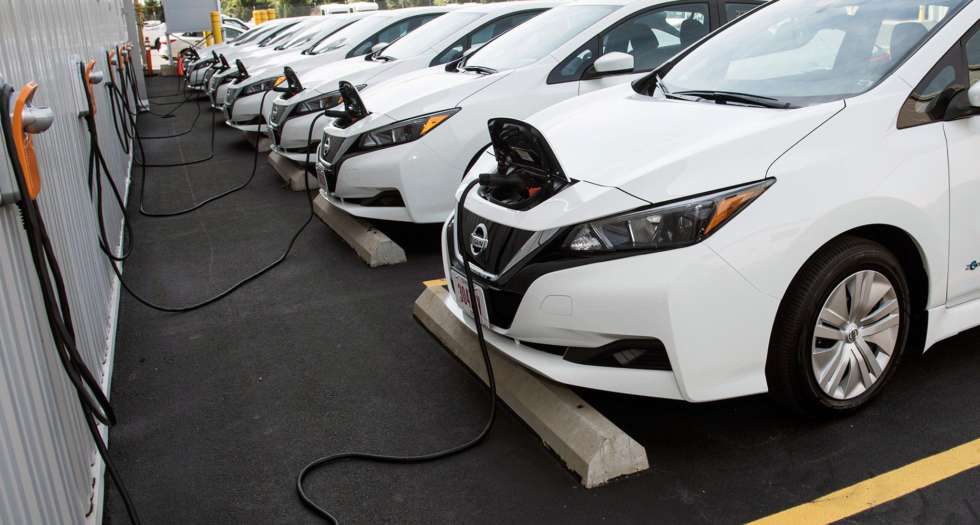Australians would need to wait more than a decade to enjoy any cost benefit from driving an electric vehicle instead of a petrol one, new analysis has found, as worldwide growth of low-emissions car sales continues to outstrip those domestically.
New modelling on the potential long-term savings has revealed that with an average $40,000 difference in purchase price between the electric and petrol models, an electric purchase would need up to 16 years to provide savings to Australian motorists.
The average age of Australia’s vehicle fleet is about 10 years, although more than 30 per cent of vehicles on the road are less than five years old.
However, for environmentally conscious drivers, in just two years a petrol car generates more carbon than an EV over its lifetime, despite electric cars being more emissions-intense to manufacture.
Many of the world’s leading economies have pledged thousands of dollars of subsidies to speed up the transition away from petrol and diesel cars in the coming decade as they strive to hit key emissions reductions targets under the Paris Agreement and head toward net zero by 2050.
For the first time in history last month, an electric car has topped Britain’s bestseller list – Tesla’s electric Model 3 – with electric cars accounting for more than 15 per cent of all car purchases. In New Zealand, more Tesla Model 3s were registered in September than Toyota Hiluxes, the 1066 sales five times that of the previous month and half of all sales so far in 2021.
The analysis, by price comparison website Compare the Market, found Australian drivers would save money eventually by choosing an EV over a petrol car because of the reduced servicing costs and it being cheaper to charge a battery than to refill a tank of petrol.
Electric cars are expected to fall in price in Australia to an average of $41,184 by 2030 while increasing their battery range to 750 kilometres between charges by 2030, up from around 450 kilometres.
The comparison site analysed the current average lifetime running costs of an electric vehicle, compared with petrol and hybrid models of the Hyundai Kona SUV to determine the most affordable model over time.
It found that if it was not for the increased manufacturing costs – which are almost 50 per cent higher than a petrol vehicle – an electric car would be the cheapest by a long way. The analysis found that a petrol-powered Kona cost around 4000 per cent more in annual refuelling costs – around $2531 – than it did to recharge the electric car at $55.50.
For the hybrid equivalent, the cost of purchase sits between the other two models at $42,942 with the long-term running costs exceeding that of the EV after 12 years of ownership but never become more affordable than the petrol model. Total hybrid car emissions don’t drop below those of a petrol car until about four years after purchase.
Electric vehicles can achieve an equivalent fuel economy of 55kms per litre of petrol, the same as a 50-litre petrol car driving 2750kms before refuelling.
The Compare the Market analysis found that at 13 tonnes each, the process of manufacturing both hybrid and electric vehicles produces more carbon dioxide than the manufacturing of petrol engine vehicles (10.5 tonnes).
Data released by the Electric Vehicle Council in August revealed there was a 169 per cent increase in electric vehicle sales from the first half of 2020 to the same period this year.
But despite 31 models now available in Australia, only 14 of them are priced under $65,000, while the average cost of a petrol or diesel car ranges between $20,000 and $50,000.
Behyad Jafari, the chief executive of the Electric Vehicle Council, said research commissioned by his organisation had found the majority of Australians were keen on electric cars but wanted to see governments take action to make them cheaper to buy.
“The benefits to the environment and household savings are clear, so it makes perfect sense to support Aussie consumers to move away from petrol and into an electric vehicle,” he said.
“We can see clearly from the rest of the world that when governments put those policies in place, the market skyrockets. The modern automotive industry has heard this message loud and clear. If you don’t give your customers an electric option, they won’t stay your customer for long.”
The federal government has been heavily criticised by carmakers and advocacy groups for its refusal to set targets in the sector and previous public ridicule of the technology. It last year ruled out subsidising new cars to incentivise widespread uptake.
Government modelling found subsidies for battery electric vehicles was not value-for-money for taxpayers and was an expensive form of abatement and is optimistic that the total cost of ownership gap between EVs and internal combustion engine vehicles will close in the coming years.


